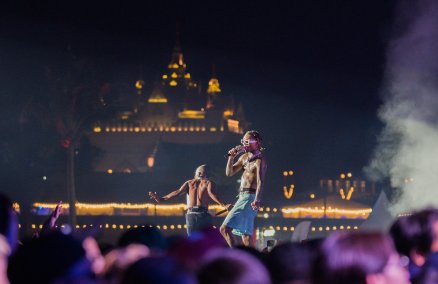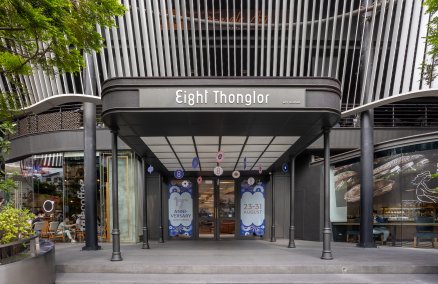How did the cinema get started?
It was designed by Western architects and engineers around the Rama V period, but we’re not sure who they were. Actually, this area, including the wooden cinema, belongs to the Crown Property Bureau. My father was chosen to operate it under a company called Saha Cinema, and my family took care of it from when I was 15 years old until it closed down 20 years ago.
What was it like in its glory days?
The cinema was booming during the Elvis Presley period, when Western culture flourished in this country. Cinemas were like a cultural revolution and soon became people’s main source of relaxation and entertainment. Tickets started from B2 and we had 200-300 seats that were always full. Waves of Chinese and Indian movies came through but the mega-hits were still Thai films like Mon Rak Luktung (1970). We could manage only three show-times a day with the technology back then, and held movies for just 3-4 days as the film reels, which were expensive aback then, needed to be rotated around other cinemas in Thailand. You know, even the founder of SF Cinema learned about this business from me?
When did things start to change?
When video came out. At first we thought video and technology might boost the cinema industry, but it wasn’t as we expected. At the same time, the city expanded and with it the number of cinemas. It got to a point where only one or two people were coming to our cinema before it closed. There was little hope for its survival.
What have you done for a living since it closed down?
I founded the Rain Drop Minisprinkle company, which designs water systems for fruit plantations in Eastern Thailand. Fortunately, my old friends from the cinema industry have helped me to get customers in Rayong and elsewhere.
What does the future hold for Sala Charlerm Thani?
I am one of the chairmen of the Nang Loeng community, and we are still working with the Crown Property Bureau and others involved on the best way for it to serve the community. I strongly believe that this cinema should be revived and made useful once again.
How would you like to see it used?
I wish it could become a cinema-related museum. We have a Thai Film Museum but it’s really far from Bangkok in Nakhon Pathom, so it makes sense to have another one in the city. There are people, especially architect students, who visit here to appreciate this old structure’s unique design and strong build quality—it’s still standing today. So it should act as a great example for the younger generation wishing to study about cinema and architecture.
To learn more about the region’s classic cinemas, check out Future’s Ruins: The Southeast Asia Movie Theater Project: An Installation at H Gallery running through Mar 31. See here for more.















